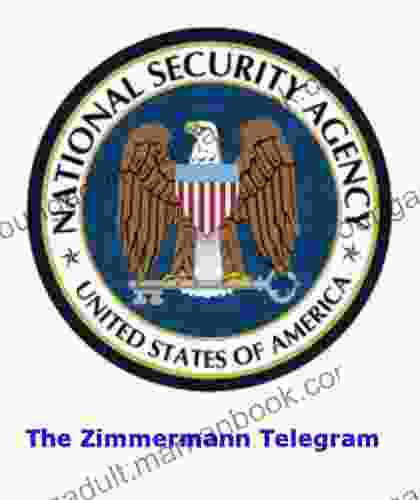Bell Labs: The Cradle of American Innovation

Bell Labs was a research and development center that was responsible for some of the most important technological innovations of the 20th century. Founded in 1925 by the American Telephone and Telegraph Company (AT&T),Bell Labs was a hotbed of creativity and innovation, and its scientists and engineers were responsible for a wide range of breakthroughs, including the transistor, the laser, and the cellular telephone.
4.7 out of 5
| Language | : | English |
| File size | : | 23211 KB |
| Text-to-Speech | : | Enabled |
| Screen Reader | : | Supported |
| Enhanced typesetting | : | Enabled |
| X-Ray | : | Enabled |
| Word Wise | : | Enabled |
| Print length | : | 432 pages |
Bell Labs was founded in the wake of the First World War, when the American telephone system was facing a number of challenges. The system was growing rapidly, and the demand for new services was increasing. AT&T needed a way to develop new technologies to meet these challenges, and Bell Labs was created to fill that need.
Bell Labs was located in Murray Hill, New Jersey, and it quickly became a magnet for some of the world's top scientists and engineers. The lab's early directors, Frank Jewett and Mervin Kelly, were both brilliant scientists and engineers, and they created an environment that was conducive to innovation. Bell Labs scientists and engineers were given the freedom to pursue their research interests, and they were encouraged to collaborate with each other.
As a result of this environment, Bell Labs was responsible for a number of groundbreaking innovations. In 1947, Bell Labs scientists John Bardeen, Walter Brattain, and William Shockley invented the transistor. The transistor was a small, solid-state device that could amplify or switch electronic signals. It was a major breakthrough in electronics, and it paved the way for the development of the integrated circuit, the microprocessor, and the personal computer.
In 1958, Bell Labs scientists Charles Townes and Arthur Schawlow invented the laser. The laser is a device that emits a narrow beam of light. It has a wide range of applications, including telecommunications, medicine, and manufacturing.
In 1973, Bell Labs scientists Martin Cooper and Joel Engel invented the cellular telephone. The cellular telephone is a portable, wireless telephone that allows users to make and receive calls from anywhere within a cellular network. It was a major breakthrough in telecommunications, and it paved the way for the development of the smartphone.
Bell Labs was also responsible for a number of other important innovations, including the solar cell, the satellite communications system, and the digital subscriber line (DSL). These innovations have had a profound impact on our lives, and they have made the world a more connected and convenient place.
Bell Labs' legacy of innovation continues today. The lab is now part of Nokia, and it continues to conduct research in a wide range of fields, including telecommunications, computer science, and materials science. Bell Labs scientists and engineers are working on a number of cutting-edge technologies, including 5G wireless networks, artificial intelligence, and quantum computing. These technologies have the potential to revolutionize the way we live and work, and they will ensure that Bell Labs remains a leader in innovation for many years to come.
The Importance of Bell Labs
Bell Labs was a major force in the development of the telecommunications industry, the computer industry, and other fields. The lab's scientists and engineers were responsible for a number of groundbreaking innovations, including the transistor, the laser, and the cellular telephone. These innovations have had a profound impact on our lives, and they have made the world a more connected and convenient place.
Bell Labs was also a major employer of scientists and engineers. At its peak, the lab employed over 10,000 people. This helped to create a pool of highly skilled workers who were available to work for other companies in the United States. This helped to fuel the growth of the American economy and to make the United States a leader in technology.
Bell Labs is a reminder of the importance of investing in research and development. The lab's scientists and engineers were able to make groundbreaking innovations because they had the freedom to pursue their research interests and because they had access to state-of-the-art equipment. This investment in research and development has paid off handsomely for the United States. Bell Labs' innovations have helped to make the United States a more prosperous and productive nation.
Bell Labs was a major force in the development of the modern world. The lab's scientists and engineers were responsible for a number of groundbreaking innovations, including the transistor, the laser, and the cellular telephone. These innovations have had a profound impact on our lives, and they have made the world a more connected and convenient place. Bell Labs is a reminder of the importance of investing in research and development, and it is a testament to the ingenuity of the American people.
4.7 out of 5
| Language | : | English |
| File size | : | 23211 KB |
| Text-to-Speech | : | Enabled |
| Screen Reader | : | Supported |
| Enhanced typesetting | : | Enabled |
| X-Ray | : | Enabled |
| Word Wise | : | Enabled |
| Print length | : | 432 pages |
Do you want to contribute by writing guest posts on this blog?
Please contact us and send us a resume of previous articles that you have written.
 Top Book
Top Book Novel
Novel Fiction
Fiction Nonfiction
Nonfiction Literature
Literature Paperback
Paperback Hardcover
Hardcover E-book
E-book Audiobook
Audiobook Bestseller
Bestseller Classic
Classic Mystery
Mystery Thriller
Thriller Romance
Romance Fantasy
Fantasy Science Fiction
Science Fiction Biography
Biography Memoir
Memoir Autobiography
Autobiography Poetry
Poetry Drama
Drama Historical Fiction
Historical Fiction Self-help
Self-help Young Adult
Young Adult Childrens Books
Childrens Books Graphic Novel
Graphic Novel Anthology
Anthology Series
Series Encyclopedia
Encyclopedia Reference
Reference Guidebook
Guidebook Textbook
Textbook Workbook
Workbook Journal
Journal Diary
Diary Manuscript
Manuscript Folio
Folio Pulp Fiction
Pulp Fiction Short Stories
Short Stories Fairy Tales
Fairy Tales Fables
Fables Mythology
Mythology Philosophy
Philosophy Religion
Religion Spirituality
Spirituality Essays
Essays Critique
Critique Commentary
Commentary Glossary
Glossary Bibliography
Bibliography Index
Index Table of Contents
Table of Contents Preface
Preface Introduction
Introduction Foreword
Foreword Afterword
Afterword Appendices
Appendices Annotations
Annotations Footnotes
Footnotes Epilogue
Epilogue Prologue
Prologue Nicole Gulotta
Nicole Gulotta Ian Goldin
Ian Goldin Rajat Agarwal
Rajat Agarwal D J Palmer
D J Palmer William Shakespeare
William Shakespeare Alyson Sheldrake
Alyson Sheldrake Traci N Todd
Traci N Todd Richard K Morgan
Richard K Morgan Jane Mizrahi Licsw
Jane Mizrahi Licsw Allyson Lindt
Allyson Lindt Sy Montgomery
Sy Montgomery Basil Bunting
Basil Bunting Nancy Revell
Nancy Revell Sara Ackerman
Sara Ackerman Hrishikesh Goswami
Hrishikesh Goswami J R Moehringer
J R Moehringer Susan Hayes
Susan Hayes Manfred Basedow
Manfred Basedow Gary Chapman
Gary Chapman Fabio Maiano
Fabio Maiano
Light bulbAdvertise smarter! Our strategic ad space ensures maximum exposure. Reserve your spot today!

 Patrick HayesThe Unlikely Rise of Donald Trump, Sonic Sophie, and the Battle for the Soul...
Patrick HayesThe Unlikely Rise of Donald Trump, Sonic Sophie, and the Battle for the Soul... Percy Bysshe ShelleyFollow ·15.6k
Percy Bysshe ShelleyFollow ·15.6k Javier BellFollow ·17.9k
Javier BellFollow ·17.9k Walter SimmonsFollow ·13.9k
Walter SimmonsFollow ·13.9k Ismael HayesFollow ·5.2k
Ismael HayesFollow ·5.2k Everett BellFollow ·8.1k
Everett BellFollow ·8.1k Grayson BellFollow ·17.8k
Grayson BellFollow ·17.8k Hugo CoxFollow ·9.6k
Hugo CoxFollow ·9.6k Dion ReedFollow ·18.8k
Dion ReedFollow ·18.8k

 Yukio Mishima
Yukio MishimaUnveiling the Zimmermann Telegram: A Pivotal Document in...
The Zimmermann Telegram, a diplomatic...

 George Martin
George MartinFearful Stories and Vile Pictures to Instruct Good Little...
In the annals of children's literature, few...

 Grant Hayes
Grant HayesJessica the Viscount Wallflower: A Tale of Transformation...
In the opulent ballrooms and glittering...

 Jerome Blair
Jerome BlairThe Economics of the Global Defence Industry: A...
The global...

 Blake Kennedy
Blake KennedyBreath of Heron - A Window into the Poetic Depths of...
In the realm of...
4.7 out of 5
| Language | : | English |
| File size | : | 23211 KB |
| Text-to-Speech | : | Enabled |
| Screen Reader | : | Supported |
| Enhanced typesetting | : | Enabled |
| X-Ray | : | Enabled |
| Word Wise | : | Enabled |
| Print length | : | 432 pages |












